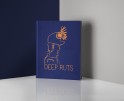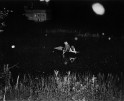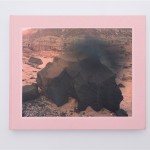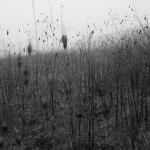George Steinmetz
I’ve been holding onto my copy of the April 19th issue of the The New Yorker because of an image by George Steinmetz. It’s the kind of image that is remarkable in so many ways, and I knew that there had to be a rich body of work behind it, and trust me, George’s site is the motherload of stunning and compelling work. In going through his website, I kept thinking about traveling painters that would visit foreign lands and bring back paintings of unseen places. George has managed to capture the world so that we look at it anew.
George piloting a motorized paraglider over Shibam, Yemen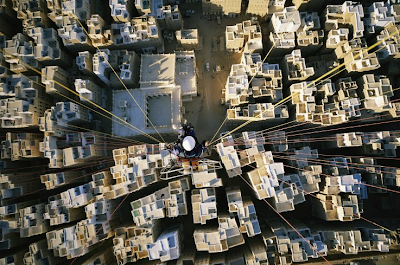
Whether by plane, by foot, or by paraglider, George is best known for his exploration photography. He sets out to discover the few remaining secrets in our world today: remote deserts, obscure cultures, the mysteries of science and technology. A regular contributor to National Geographic and GEO Magazines, he has explored subjects ranging from the remotest stretches of Arabia’s Empty Quarter to the unknown tree people of Irian Jaya.
Since 1986, George has completed 18 major photo essays for National Geographic and 25 stories for GEO magazine in Germany. His expeditions to the Sahara and Gobi deserts have been featured in separate National Geographic Explorer programs. In 2006 he was awarded a grant by the National Science Foundation to document the work of scientists in the Dry Valleys and volcanos of Antarctica.
George has won numerous awards for photography during his 25-year career,including two first prizes in science and technology from World Press Photo. He has also won awards and citations from Pictures of the Year, Overseas Press Club and Life Magazine’s Alfred Eisenstadt Awards.
I am featuring select images from two series, The Empty Quarter and African Portfolio. Be sure to click on images to see them larger.
The Empty Quarter:
I became captivated by Arabia’s Empty Quarter as a young man when I read Wilfred Thesiger’s Arabian Sands. The Empty Quarter is larger than France without a single permanent point of water or human habitation. It’s both the world’s largest sand sea and one of the hottest places on earth, and has only been traversed a handful of times. I didn’t want to repeat Thesiger’s epic journeys many decades later, but when I discovered motorized paragliding I found a way to visualize this remote landscape in a new way. I made three paragliding trips into the sands, first for GEO in Saudi Arabia, and then returned two years later to go from Riyadh to Oman and Yemen for National Geographic, and finally made a personal trip to the southern most reaches of the U.A.E. to complete my field work. What I found was one of the most beautiful and unseen wilderness on earth. On its fringes I encountered elements the oil wealth that has forever changed Arabia, but I also found Bedouins still clinging to traditions, and offering up a level of hospitality that was truly humbling. This body of work would simply not have been possible without their kindness.
Images from The Empty Quarter
Arabian oryx range freely in a newly established wildlife refuge near Umm az Zamul in the U.A.E.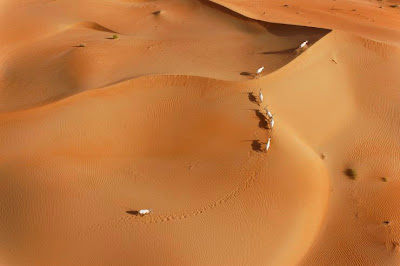
Market of traditional handicrafts and camel specialty goods
Shibam, the ancient trading capital of the Yemeni part of the Empty Quarter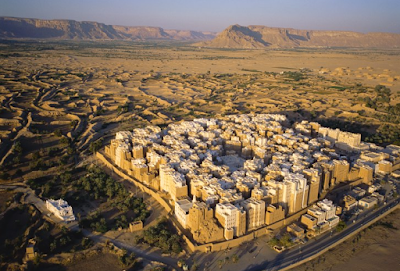
A Saudi truck driver from Najran finishes his meal at a roadside diner near Al Faw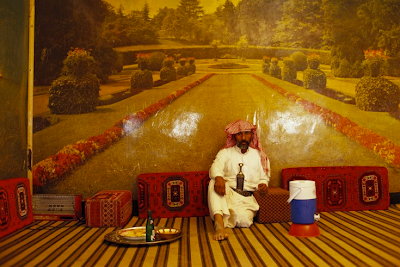
A heard of camels cross the sandy gravels of the Empty Quarter on their way to graze near Wadi Mitan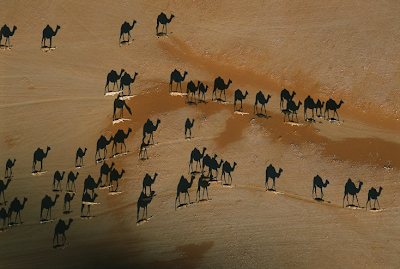
Tomato crop in center-pivot irrigation circle near Al Faw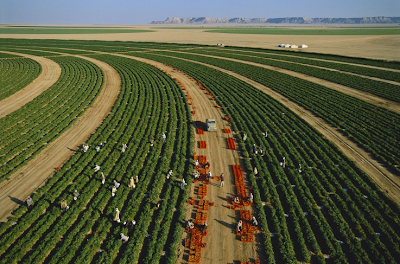
From African Portfolio:
I fell in love with Africa as a twenty-one year old college drop-out, when I hitch-hiked across the continent for two and a half years. It was a life changing experience for me, and a place where I decided to take up photography to document the amazing areas I was exploring. On that trip I dreamt of how amazing it would be to fly over
Africa’s vast landscapes, and some twenty years later my dream came true when I talked National Geographic into financing a portfolio of aerial photos for the coming Millennium. As I buzzed around the Sahara in small planes I was frustrated by how fast they flew, and wanted a lower and slower perspective, with an aircraft that I could pilot to put myself into exactly the right position in the sky. I eventually settled on motorized paragliding, with the lightest and slowest powered aircraft in the world. And since learning how to fly I have returned to Africa repeatedly over the past ten years to create a large body of work that I put into my first book, African Air.
Images from African Portfolio
Elephants grazing in Lake Amboseli National Park, Kenya
Fishing Village outside Nouakchott, Mauritania
Terraced crops, Rwanda
Posts on Lenscratch may not be reproduced without the permission of the Lenscratch staff and the photographer.
Recommended
-
ALEXIS MARTINO: The Collapsing Panorama April 4th, 2024
-
The International Women in Photo Association Awards: Lorraine Turci: The Resilience of the CrowMarch 16th, 2024
-
Julie Rae Powers: Deep RutsMarch 2nd, 2024
-
Interview with Peah Guilmoth: The Search for Beauty and EscapeFebruary 23rd, 2024
-
Interview with Kate Greene: Photographing What Is UnseenFebruary 20th, 2024






